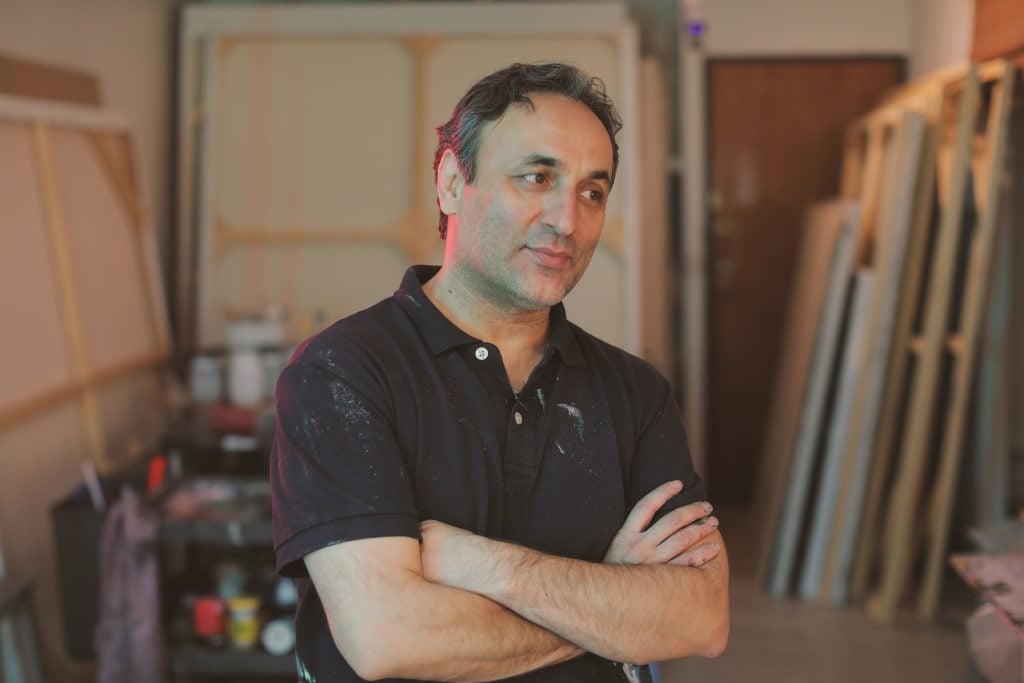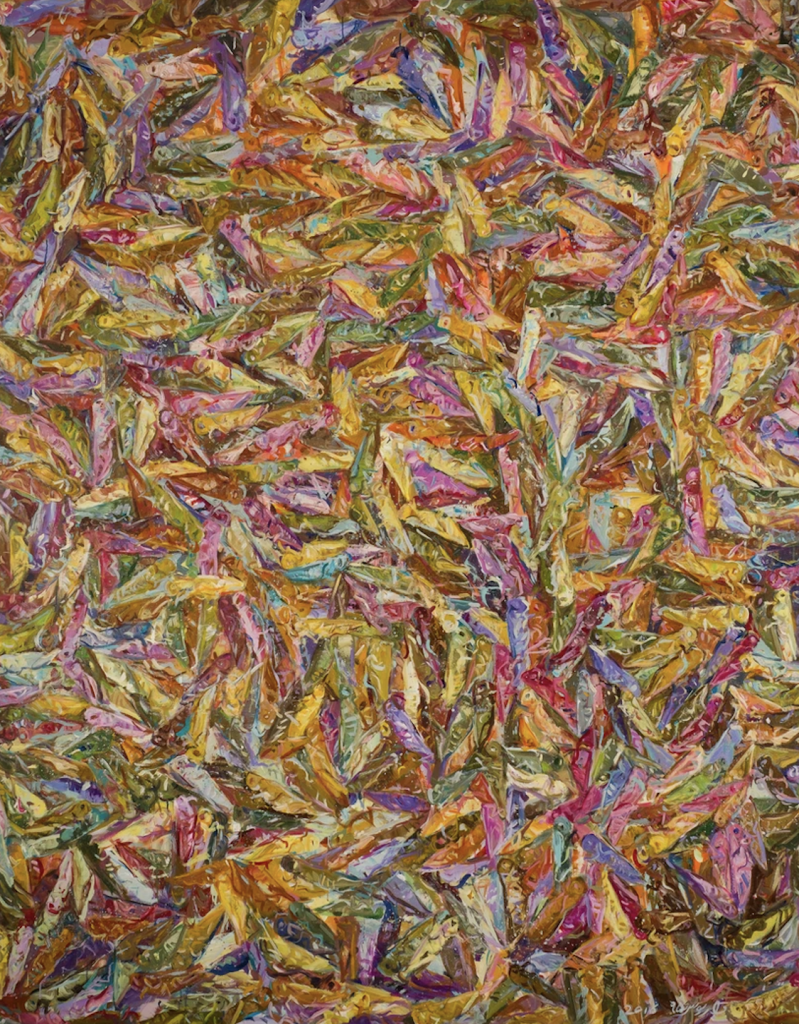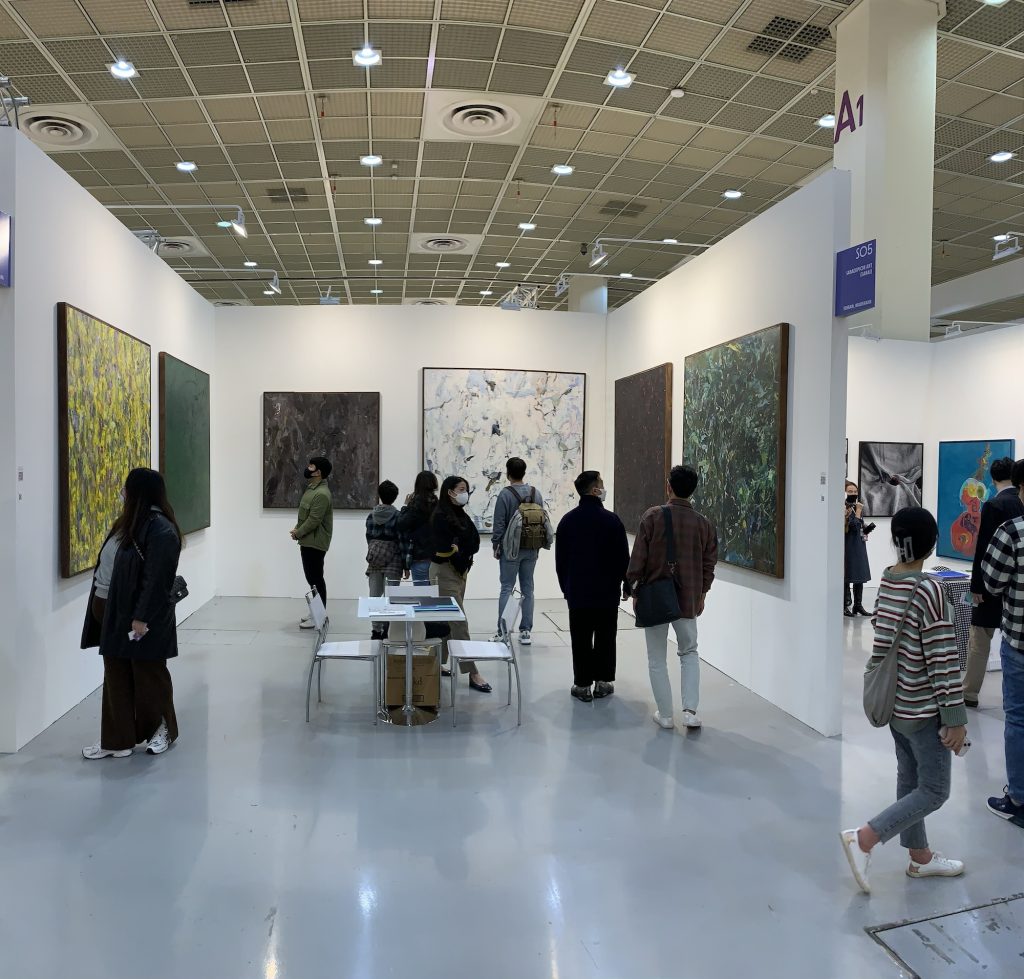Gallery Network
Spotlight: How Persian Miniatures Influence Contemporary Iranian Painter Dariush Hosseini
The artist recently had a solo presentation at KIAF 2021 in Seoul with his gallery SARADIPOUR.

The artist recently had a solo presentation at KIAF 2021 in Seoul with his gallery SARADIPOUR.

Artnet Gallery Network

Every month, hundreds of galleries add newly available works by thousands of artists to the Artnet Gallery Network—and every week, we shine a spotlight on one artist you should know. Check out what we have in store, and inquire for more with one simple click.
About the Artist: Dariush Hosseini (b. 1970) is one of Iran’s leading contemporary painters, making images that fluctuate between figuration and abstraction, sometimes within a single canvas. In October, SARADIPOUR Art Gallery, based in Mahshahr, Iran, presented a solo exhibition of work from Hosseini’s “Wide Shut” series at KIAF 2021 in Seoul, marking the first display of the artist’s work in Korea. For many visitors to the fair, the booth was their first introduction to contemporary Iranian painting (SARADIPOUR was the only gallery hailing from the Middle East). The works were received with great interest and several of the artist’s large acrylic paintings were acquired by a private Korean museum.

Dariush Hosseini, Persian Carpet 1 (2016). Courtesy of Saradipour Gallery.
Why We Like It: Hosseini’s “Wide Shut” series is rooted in his continuing exploration of diminishing points of perspective. In these works, forms and motifs are rendered in a state that is neither fully figurative nor purely abstract. His images draw from the natural world—a wave crashing on the beach, mountains, or a bed of flowers—but his depictions are expressive and process-oriented rather than representational. At times, Hosseini’s works can possess an almost decorative quality, which is rooted in the artist’s love of Persian miniature, in which motifs and the quality of flatness are prized.

Installation view of the artist’s booth at KIAF Seoul 2021, October 2021.
According to the Artist: “In my more abstract paintings, I have always wanted to find substitutes for my forms in nature and the objective world, and I felt that nature is a subject whose elements can recur throughout the space. The viewer could imagine that as the frame grows bigger, these motifs could replicate and fill the space ad infinitum.”
Learn more about the artist here.